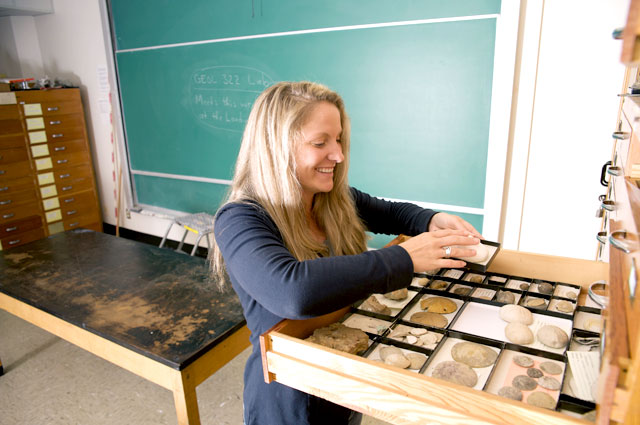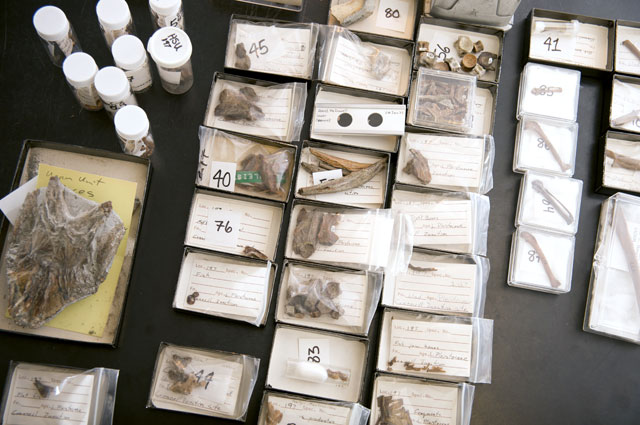Patricia Holroyd, curator of vertebrates at the museum, will travel to Humboldt State to personally oversee the transfer. She thought the collection was too valuable to simply ship, Miller says.
“It’s really quite an honor,” says graduate student Kelly Givins, Curator of the fossil collection in the Department of Geology at HSU. “She’s going out of her way to transport these fossils because she thinks we have something invaluable to contribute.”

Givins, an HSU Art graduate currently enrolled in the Geology graduate program, voluntarily sifted through the department’s fossil specimens to help identify, label and organize multiple collections, including specimens used for teaching.
The Cenozoic vertebrate collection was one of Givins’ most important projects. “It’s important because it’s from this region, which might not already be represented at UCMP,” she says. “It benefits everybody if scientists can access these fossils for study.”
The collection contains specimens from vertebrates from about 5.4 million years ago to 12,000 years ago, during the Pliocene and Pleistocene Epochs. It includes fossils of late Cenozoic birds, sea otters and sharks. The collection also presents a mystery.

“Most of the formations where the specimens were collected are shelly deposits,” Miller says. These deposits are considered high-energy because they were shaped by the high energy of tides and waves. However, in this collection there are also fragile bird bones mixed in with these high-energy, shallow marine shelly deposits.
“It’s a paleontologic puzzle,” Miller says. “I don’t know how any of those delicate bird bones would have gotten mixed up and churned up like that.” Miller hopes that by opening the collection up to scientists, some answers might be found.
Sam Morrison, an undergraduate student at HSU in the ’70s, collected most of the specimens going to the museum. They come from at least 10 different locations on the North Coast. “Sam had an eye for finding things like bones mixed up with shell,” Miller says. “And some of the localities are hard to get to. The outcrops aren’t as accessible as they were in the ’70s.”
Morrison returned this year to assist Givins fill in some of the blanks she discovered when the specimens surfaced. “Sam was very helpful in this process and an inspiration to me as a budding paleontologist,” Givins says.